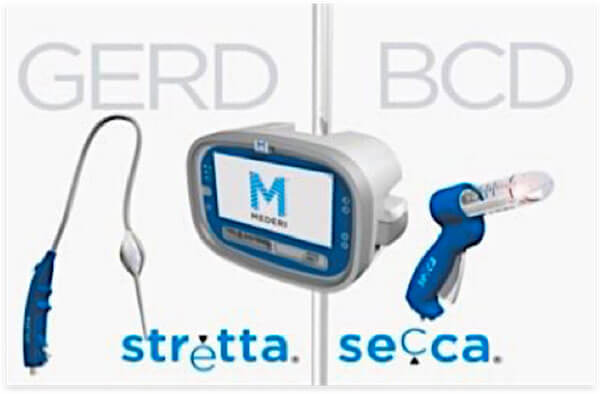Could not find what you are looking for?
Surgeries
Gastrointestinal Surgery: Types & Procedures
Surgeries
Endoscopic Non-Ablative Radiofrequency (NARF) Treatment for Sphincter Disorders:

Sphincter disorders, especially of the entry (esophageal) and exit (anal) sphincters are the commonest, causing various disease symptoms, but with limited treatment options, both medical and surgical, and varied success rates.
Gastroesophageal reflux disease (GERD)
GERD, also known as acid reflux, is a condition where stomach contents flow back up into the food pipe (esophagus) after eating, resulting in either symptoms or complications. Symptoms include the taste of acid or bile in the back of the mouth, heartburn, bad breath, chest pain, vomiting, breathing problems, and wearing away of the teeth. Complications consist of esophagitis, esophageal strictures, and Barrett’s esophagus (a precancerous condition). Treatment is typically via lifestyle changes and medications. Lifestyle changes include not lying down for three hours after eating, weight loss, eliminating certain foods, and stopping smoking. Medications include antacid, H2 receptor blockers, proton pump inhibitors, and prokinetics. Some patients will be subjected to surgical management with Laparoscopic Fundoplication, which involves making incisions in the torso and wrapping part of the stomach around the base of the esophagus, which is the gold standard for efficacy. Though surgery posts its own risks and post-operative issues, there was no other option around until recently, when Stretta therapy was introduced.
Stretta Therapy
The trans-oral Stretta catheter system uses a proprietary application of RF energy that is low-power (5 Watts) and generates low temperatures (65°C to 85°C) during a series of 14 one-minute cycles which remodel the lower esophageal sphincter (LES) muscle and gastric cardia. Clinical studies demonstrate that Stretta RF treatment results in considerable reductions in tissue compliance and transient LES relaxations, as well as increased LES wall thickness due to muscle growth.

These mechanisms restore the natural barrier function of the LES and reduce spontaneous regurgitation caused by transient relaxations of the sphincter. Stretta is typically performed on an outpatient basis with conscious sedation.
Anal (Faecal) Incontinence
Faecal incontinence is defined as the unwanted release of mucus, gas, or stool. It incontinence represents not only a social and physical debility, but it can also become a psychological burden that profoundly impacts an individual’s quality of life. Several approaches to management are recommended, depending on the etiology of the condition. These include dietary modification, perineal exercises, medications, biofeedback, and a host of surgical alternatives. The ideal candidate for surgical treatment is the individual with a sphincter defect, but even with an anatomically successful direct sphincter repair, failure rates with respect to functional results are quite high.
Secca Therapy
The trans-anally inserted Secca system uses a proprietary application of RF energy that runs on the dual-purpose RF1 generator. Similar to the Stretta system, Secca is low-power (8 Watts) and low temperature (65°C to 85°C) treatment of bowel incontinence in a series of up to 20, one-minute cycles. Through the delivery of RF energy, Secca therapy remodels the muscle of the internal anal sphincter (IAS). Secca has been proven safe and effective in numerous studies and is typically performed on an outpatient basis with conscious sedation.

A major advantage of SECCA compared with other treatments, such as bulking injections, sacral nerve stimulation (SNS) and surgery, is the relatively low morbidity.”
Both the procedures are used by gastroenterologists, general surgeons, bariatric surgeons, ENT surgeons, urogynecologists, colorectal surgeons, and thoracic surgeons. Endoscopic non-ablative radiofrequency ablation delivers radiofrequency energy in the form of electromagnetic waves through electrodes at the end of a catheter to the sphincters. The energy heats the tissue, ultimately causing it to swell and stiffen causing local inflammation, collagen deposition and hypertrophy of the muscles of the sphincter thus increasing the sphincter pressure and treats the incontinence.
These products fill the treatment gap between medications and surgery with up to 93% patient satisfaction and have good results lasting to 10 years.



